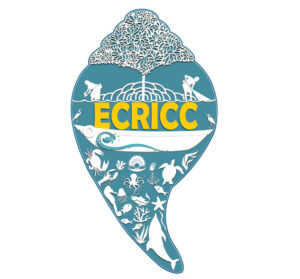Landscape Profile & Maps
Landscapes in Odisha
- Talasari (Balasore district)
Talsari is situated between 21°35’48” northern latitude and 87°27’17” eastern longitude, in north eastern coast of Odisha state, and has area spread in Bhogarai&Baliapal blocks of Balasore district. Subarnarekha and estuarine rivers meanders through Talsari landscape before and it is also crisscrossed with perennial because of its proximity to the sea.
The landscape has two distinct geographical regions – the coastal belt and the inner alluvial plains. The coastal belt, shaped like a strip is about 81 km wide, and has sand dunes along the coast with some ridges. The sand dune are under threat due to the destruction of the vegetation either due to due to the development and other anthropogenic activities along the coastal areas. TThe area mostly get flooded by brackish water of estuarine rivers, which is unsuitable for cultivation, whereas the alluvial plain have a wide stretch of highly fertile and irrigated land. The weather is generally hot with high humidity. May is considered the hottest and December as the coolest month of the year.
It is rich in both terrestrial and marine wildlife. Many species of mammals, birds, reptiles, amphibians with species of insects and microfauna are found in Talsari. It is also home to large number of red ghost crabs (Ocypodemacrocera) that are considered as glory of this beach/region. Crabs habitats are mostly near estuaries and beaches, that are not frequented by humans. The deep burrows dug by these crabs play a crucial role in keeping the local ecology thriving. Research suggests that the crab’s digging behaviour enhances oxygenation in the ground soil and facilitates decomposition of organic materials and nutrient recycling.
But, the environmental pollution, human exploitation and pollutants originating from human activity, habitat destruction and rising unsustainable tourism in recent years, have impacted the natural habitat of these crabs as well as have resulted in the decline of the population of red ghost crabs.

- Bahuda (Ganjam district)
Bahuda estuary is a small estuary situated at the extreme south coast of Odisha, in Ganjam district between latitude 19°3’N- 19°10’ N and 84°E. The estuary covers an area of 15 sq. km with an average depth of 2.6 meter. Only 73 km long, river Bahuda originates from the Khondalit terrain of the Eastern Ghats at Andanda, located in between Ramgiri and Mahendragiri hills of Gajapati District of the state. It meanders through several valleys or plains of two states – Andhra Pradesh and Odisha, forming the estuary near Sonapur in Ganjam district of Odisha, and finally empties into a shallow lagoon that opens into the Bay of Bengal.
The size of the estuary is about 5 km in length and 250 metres width. It has larger bodies of standing water occupying distinct basins, mudflats, marsh and huge salt pan area. The estuary basin near the mouth and head region is sand dominated, while their mid reach is characterized by silt and clay dominated sediment. It has a large mudflat near it which can well be utilized for brackishwater culture of these prized species.
Bahuda basin have various associated wetland ecosystem. This region has significant ecological and biodiversity value. It provides suitable residence for unique species of flora and fauna. Patchy Mangrove is found in Bahuda. Only one species of it is found in the backwaters of Bahuda i.e., Avicennia marina. It is an important site for the faunal diversity of fishes in the east coast and support several species in terms of nesting cum breeding grounds for fin fish, acts as a nursery for commercial important shrimps, prawns and crabs as well as natural habitats of molluscs like mussel, oyster and clams. Bahuda high sporadic nesting takes place during the nesting period and are are excellent ground for number of water birds in winter.
The coastline of Bahuda has micro tidal (≤ 2m amplitude) with high wave energy. There is no natural hard substratum around. It is influenced by semi-diurnal tide and thus ingress and outflow of seawater occur twice daily. The physicochemical parameters of Bahuda estuary show well marked seasonal as well as spatial variations being influenced by monsoon cycle and tidal rhythm.

- Chilika(Ganjam District)
Chilika, the brackish marine lagoon in Odisha, is the largest in India and the second largest in the world. It is spread over three coastal districts of the state – Puri, Khurda and Ganjam.. It is connected to the Bay of Bengal on the south, and the Eastern Ghats Mountain ranges forms most of its catchment on the north and the west. It is a Ramsar Site of international conservation importance and a biodiversity hotspot.
Freshwater run-off from the drainage basin, combined with saline water inflows from the ocean, results in a wide range of fresh, brackish and saline water environments within the lagoon, and this spatially and temporally diverse water environment supports an exceptionally productive ecosystem. Some rare, vulnerable, and endangered species listed on the International Union for the Conservation of Nature’s (IUCN) red list of threatened animals inhabit the lagoon. It is the largest wintering ground for migratory waterfowl from other continents. It is home to Irrawaddy dolphins as well, and 225 or more number of fish species. Along with a variety of phytoplankton, algae, and aquatic plants, the region supports over 350 species of nonaquatic plants.
The size of Chilika fluctuates substantially within the course of a year. It expanded to 1165 km2 during monsoons, and shrinked during the dry season to 906 km2 (as per a satellite image). Land reclamation for agriculture, aquaculture and human settlements, along with sediment inflows from the catchment, are attributed for the reduction of the average lagoon area to further 760 km2. Additionally, Chilika faced a series of problems by the 1990s. The lagoon decreased its salinity, caused by a narrowing/chocking of the lagoon’s mouth due to the accumulation of sediment entering the lagoon from its drainage basin. As the tidal flux was disturbed, the lagoon’s salinity decreased, thereby altering the natural ecosystem.
A few mangrove associates (such as Aegicerascorniculatum, Excoecariaagallocha, Salvadora persica, Pongamia pinnata, and C. ceylanica) , medicinal and aromatic plants, wild relatives of cultivated species, wild plants of horticultural importance and other interesting plant groups, five species of seagrass (such as Haloduleuninervis, Halodulepinifolia, Halophila ovalis, Halophila ovata, H. beccarii) are found in this region.

- Bhitarkanika (Kendrapada district)
Bhitarkanikais located in the estuarial region of Brahmani-Baitarani between 20º35’ to 20º50’N and 86º45’ to 87º05’ E, in the north eastern part of Kendrapara district. The landscape is widely acclaimed for its rich biodiversity, different ecosystems like the landmasses, tidal waterbodies of the deltaic region, estuaries and territorial waters of the Bay of Bengal along with their associated flora and fauna. It is one of the rare swamps with a compact mangrove ecosystem, next only to Sundarbans in West Bengal. In a bid to conserve the complex and fragile mangrove ecosystem and the endangered flora, fauna associated with it, Government of Odisha in 1975, constituted Bhitarkanika Wildlife Sanctuary, whose area is 672 Sq. Kms. In the year 1998, the core area of Bhitarkanika Wildlife Sanctuary comprising of 145 Sq. Kms was declared as a National Park. The area has also been designated as the second Ramsar site (i.e. Wetland of International importance) of the State.
In recent years, climate change influenced weather events has increased in the Bhitarkanika landscape region. The two major river systems further makes it vulnerable to cyclones, storms surges and floods. Sea erosion and ingress of sea water are other threatshave displaced many locales and are a threat to the lives and livelihoods of the people the in the landscape.

- Chilika (Puri district)
Chilika Lake is the largest brackish water lagoon in Asia and second largest in the world. It is spread across an area of about 1100 sq.km. It is the largest wintering ground for migratory birds on the Indian sub-continent. The highly productive Chilika Lagoon eco-system with its rich fishery resources sustains the livelihood for many fishermen who live in and near the lagoon. Chilika is spread across Puri, Khordha and Ganjam districts. The lake is a shallow bar-built estuary with large areas of mudflats. The western (Khordha) and southern margins (Ganjam) of the lake are fringed by the Eastern Ghats hill range. Chilika (Puri) landscape covers Krushnaprasad, Brahmagiri and Kanas blocks of Puri district and Tangi, Chilika and Banapur blocks of Khordha district. These coastal blocks are highly vulnerable to threat to cyclones, floods and tidal inundations. Cyclones ordinarily bring in their trail heavy rains causing severe floods and saline inundation.

- Mahanadi mouth (Puri district)
The Mahanadi river originates in the Amarkantak hills of the Bastar Plateau near Pharasiya village in Raipur district of Chhatisgarh and traverses a total distance of 851 km (in Odisha 496 km) before falling into the Bay of Bengal. The river enters Odisha through Sambalpur and flows through Sonepur, Boudh, Angul, Nayagarh, Cuttack and Jagatisinghpur districts and enters Kendrapara district in south at Raipur of Mahakalpada Block. Then it passes through Khursia, Kulla and embraces the river Luna at Chaumuhani. Then it makes its passage to Bahukud, Hetamundia and finally meets the Bay of Bengal near the False Point at 20º 18’ N. and 86º 43’ E. The estuarine ecological system of river mouth of Mahanadi is very rich in diversified mangrove flora and fauna including rich aviaries. This is the land of rookeries of many reptiles and birds and fishes. This eco-system controls the regional climate of this tract and saves the seacoast from sea erosion. The massive flora and fauna of this region sustains the livelihoods of lakhs of people. The deltaic coast is vulnerable to natural hazards like storms/ cyclones apart from high river floods. The continuous increase in number and intensity of extreme weather events in the region possess a threat to the biodiversity as well as the lives and livelihoods of people living in and around the area. The climate change induced sea-level rise is also a threat to the ecosystem of the area.

- Devi mouth (Jagatsinghpur district)
Devi river mouth landscape (86°23′36.5″E, 19°57′43.2″N) is one of the landscapes under Puri and Jagtsinghpur districts of Odisha. It is a distributary of Mahanadi river and therefore falls in the Mahanadi basin. To the north of the mouth is Jagatsinghpur district. Devi mouth is a biodiversity rich area. Along with the mangroves, it is known for its olive ridley turtles and the red crabs. From climate change perspective, Astaranga, Ersama, Balikuda and other blocks of the landscape is frequented by cyclones and coastal flooding.


